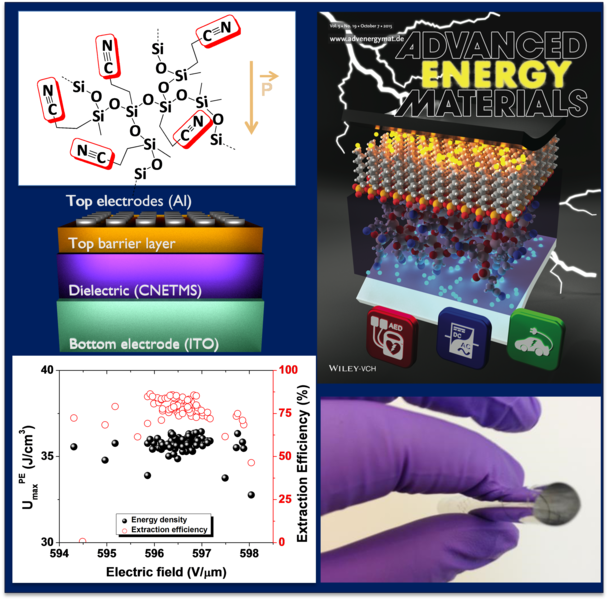Inventors at Georgia Tech have developed a process for the development of a high energy/power density capacitor device with high energy extraction efficiency based on sol-gel films formed by use of siloxane precursors bearing a polar group on a flexible tether group.
The technology is an energy storage thin film device with an energy extraction efficiency of 70-80%. The inventors believe this technology can be improved to an extraction efficiency of 90-100%. Additionally, the inventors have demonstrated a high energy density of 30-40 J/cm3 in a thin film device. The use of easily processable and scalable thin film devices on a variety of substrates including flexible substrates will increase the commercial opportunities of this technology.
- Sol-gel materials are a targeted research area for thin film energy storage and enhanced storage capabilities for wide variety of applications
- All solution-processing including ready-to-spin recipes
- Compatible with flexible substrates and roll-to-roll processing
- Energy extraction efficiency of 70-80%
- High energy density of 30-40 J/cm3 and power density of 520 W/cm3 in a thin film device
- High dielectric permittivity (>20) and low dielectric loss as well as high breakdown strength
This invention would be recommended for multiple applications, including discrete, embedded or on-chip integrated capacitor applications, gate dielectrics for transistors and displays, capacitive touch screens, light weight mobile defibrillators, filters for cellular devices, electric propulsion, electric vehicles, power invertors for micro grid storage, and load leveling of transients on a wide range of timescales for medium voltage electric grids.
Research efforts in optoelectric devices have focused on materials that can be successfully used for energy storage. In developing these technologies, researchers concentrate on high storage and enhanced breakdown strength as well as fast charging/discharging as key features. Recently, the use of high dielectric constant nanoparticles and compact polar groups into processable materials has shown to improve energy storage capability and the breakdown strength of capacitor devices. CNETMS films have been shown to be promising materials in this space, as the use of the materials has shown to provide for the ability to provide large extractable energy resulting from the linear dielectric polarization behavior.

In the cover image, luminous dots represent charges and the amorphous sol‐gel layer is below the monolayer.
